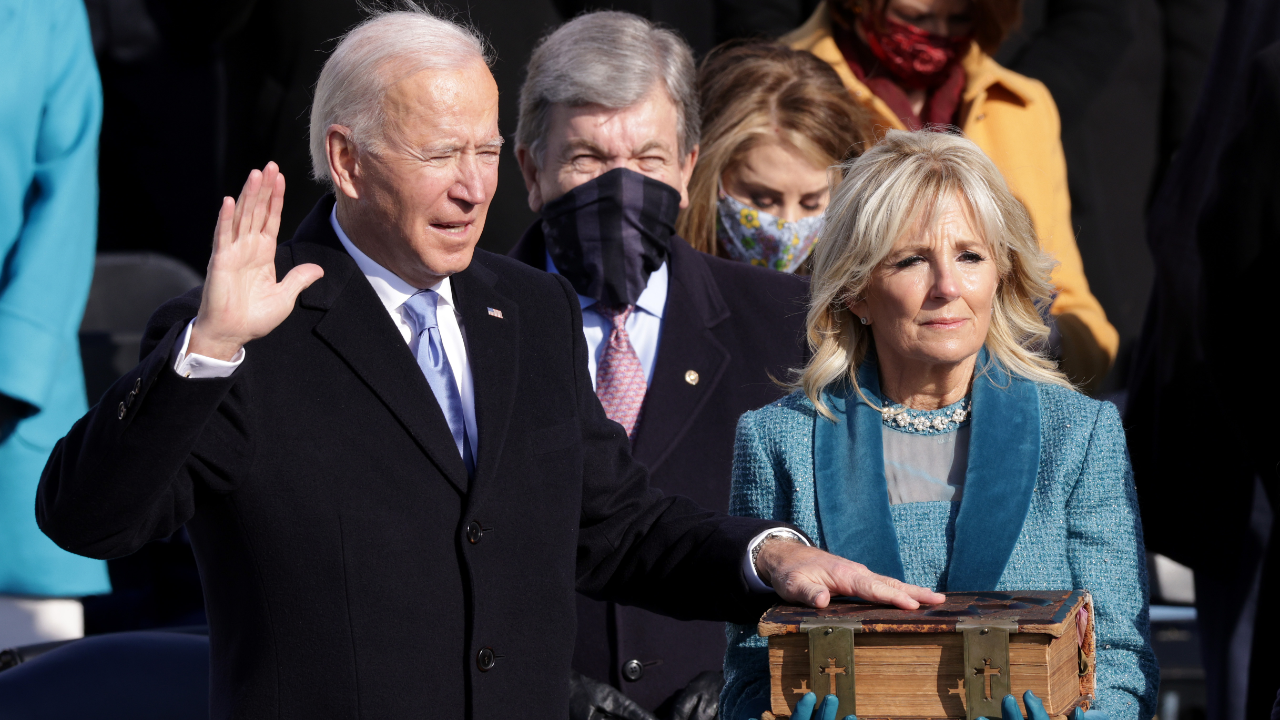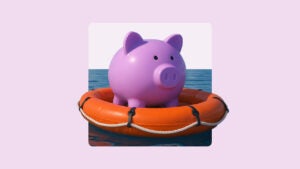Third stimulus check and COVID-19 rescue plan: How Biden’s first 100 days could impact your money

Familiar challenges await Joe Biden as he becomes the next president of the United States: His earliest days in the White House will be focused on mending an economy facing its worst fracture since the Great Depression, as was the case during his vice presidency in 2009.
But fighting the pandemic-induced recession will be a drastically different task, and he’ll have to take up the challenge in a deeply divided Washington. Bolstering prospects for less gridlock on an economic rescue package, Democrats gained a legislative edge in the Senate after Georgia’s run-off elections. Yet Biden’s party has a slimmer majority in the House of Representatives, and lawmakers could be distracted for a while by impeachment proceedings for outgoing President Trump.
For everyday Americans, it’ll still be crucial to carefully manage your finances over the next few months, even as it looks like more aid could be just around the corner.
“It’s a bit like a Rubik’s cube,” says Greg Valliere, chief U.S. policy strategist at AGF Investments in Washington. “Once you get one part of policy done, some other part has to be dealt with. It’s hard to get everything into sync, and that’s going to be part of the problem this year.”
Here’s what to expect from Biden’s first 100 days in office and what it means for your finances.
Biden’s biggest priority in his first 100 days: COVID-19 relief and economic stimulus
Biden teased what’s bound to be the biggest part of his agenda over the next 100 days in a massive announcement last Thursday: The president is planning to ask Congress to spend another $1.9 trillion to help struggling Americans get through the COVID-19 crisis.
Clocking in at almost 2.5 times larger than the American Recovery and Reinvestment Act of 2009, the bill plans to attack the related health care and economic crises by ramping up virus testing, vaccine delivery and production, as well as delivering aid directly to U.S. households and businesses to help them weather the storm until the pandemic is under control.
“It’s clear that getting out in front of the pandemic — that’s going to be the top priority,” says Gary Schlossberg, global strategist for the Wells Fargo Investment Institute.
If passed, the bill would send a third stimulus check totaling $1,400 to most low- to middle-income adults, including those claimed as a dependent or in a mixed-status household.
The proposal would also enhance jobless benefits to the unemployed by an extra $400 a week through September, craft a uniform paid family leave policy mandatory for all firms and send $350 billion to hard-hit state and local governments.
Third stimulus check worth $1,400 (or more)
But it may make the more debts-and-deficit-minded lawmakers in Congress uncomfortable, particularly after they already dished out more than $3.49 trillion to fight the crisis across five different relief packages, according to Treasury Department data on U.S. spending. And the larger the bill, the more drawn-out negotiations are bound to be.
Republican lawmakers have been particularly uneasy with sending out another tranche of stimulus checks even larger than the first and second rounds, with their biggest complaint being that the cash is bound to prop up Americans regardless of whether they’ve taken a substantial income hit. Even Sen. Joe Manchin of West Virginia, considered a middle-of-the-road Democrat, has pushed for more means-testing of economic impact payments.
“The Republicans aren’t that relevant in this process; they don’t have the votes in either chamber,” Valliere says, who expects Biden could get about $1.5 trillion of his $1.9 trillion package approved by Congress by about mid-February. “The relevant politicians are these moderate Democrats. They have the potential to derail or at least weaken stimulus.”
Proponents, however, suggest that stimulus checks act as a two-fold economic stimulant, with the less affluent households immediately spending it and the upper-income households holding on to it for when the economy does open back up — adding more dry powder to consumption.
President Donald Trump might have also managed to convert several on-the-fence Republicans with his support for larger checks back in December.
“Even as we go through different stages of reopening,” Schlossberg says, “you’re going to need some sort of capital, perhaps to get out in front of rent payments until the revenue stream picks up again.”
Lawmakers have also been uncomfortable with picking up the tab for state and local governments, many of which have dealt with budgetary shortfalls long before the pandemic. How much and for how long the federal government should boost weekly unemployment checks has also been central to the debate.
Biden may want to act quickly as economy’s rebound slows
The circumstances might be on Biden’s side early in the year. Joblessness is on the rise, firms are cutting jobs and more Americans are filing applications for unemployment benefits as states impose new restrictions to curb the spread of the virus. Economists say the robust rebound that most expect later this year will depend on more fiscal relief.
“Biden would want to do it upfront,” Schlossberg says. “This is when he has the most momentum, especially when the economy is showing signs of losing momentum.”
Biden said Thursday that he’ll also introduce a forthcoming infrastructure package with more job-creating investments. While the details are scarce, Biden hinted on the campaign trail that the package would be around $2 trillion and touch on his climate- and manufacturing-related goals, the bill containing plans to create jobs to expand U.S. factory floors and updating homes, transit systems and buildings.
The already-announced “American Rescue Plan” also contained plans to create a public health jobs program worth 100,000 positions for contact tracing and testing.
“With a 50-50 split, he has to have everybody on board,” Schlossberg says. “There are some issues where he might be able to get some Republican votes, but he’s looking for bipartisanship. Something like a $2 trillion package is not going to get him that.”
Executive orders: Student loan relief, eviction freeze, Trump-era regulations
Right after his inauguration, policy analysts say Biden will like scuttle to sign a sweeping set of executive orders, a quick way of accomplishing his legislative agenda. Part of that is practice among new presidents to signal a regime change.
Of the more wallet-impacting measures, Biden will extend an interest waiver and federal student loan forbearance program through Sept. 30, which was originally set to expire Jan. 31, according to a statement from his transition team outlining Biden’s “Day One” priorities.
The Higher Education Act of 1965 also grants Biden the authority to cancel up to $50,000 worth of student loan debt by directing the Education Secretary in an executive order, but prospects of Biden cancelling that much, or even a smaller amount, are dimming. The president included no such plans — or any pertaining to student loan relief — in his “American Rescue Plan.”
Biden is also extending a moratorium banning evictions and foreclosures on properties with a federally backed mortgage through at least March 31, the release said.
The newly inaugurated President is expected to focus on the Consumer Financial Protection Bureau (CFPB), a consumer watchdog agency created in 2011 under the Obama administration in the aftermath of the financial crisis. Biden has already selected former CFPB architect Rohit Chopra to lead the organization (the board is currently headed by Trump-appointed Kathy Kraninger), but he’ll also possibly ramp up the board’s duties, potentially opening the door to investigating more watchdog claims that are bound to arise due to the pandemic-induced crisis, such as mortgage foreclosures or payday lender abuse.
Down the road: Robust rebound might pave the way for tax increases
The sooner the pandemic is in the rearview mirror, the closer Biden’s other plans touted on the campaign trail can come to fruition, experts say. Those include creating a public health insurance option similar to Medicare, as well as proposals to raise taxes on higher earners and corporations.
Biden’s tax plans mainly include walking back the Trump-era Tax Cuts and Jobs Act of 2017 by restoring the top-line tax rate to 39.6 percent from 37 percent, hiking corporate taxes from 21 percent to 28 percent and instituting a payroll tax on wages above $400,000 a year.
Tax hikes might also be unavoidable at some point to pay for the federal government’s crisis response, though several economists — as well as Federal Reserve Chairman Jerome Powell — have urged lawmakers not to fret about the price tag of pandemic relief yet. Meanwhile, economists cite significant challenges for Biden if he were to impose those increases now, as businesses and households are still battered by the recession. Instituting them in 2022, however, might be too late.
“Thanks to all of this stimulus, a strengthening economy is going to speed up the timetable for tax hikes,” Valliere says. “Once we have a good economy, Biden has to move quickly on taxes because next year is an election year. Does he want to be working on a pretty sizable tax hike on businesses and individuals in 2022, an election year, or does he want to get it out the way quickly?”
What this means for your wallet
When it comes to managing your money, you might be feeling overwhelmed by everything that’s going on in Washington. Mark Reyes, CFP, financial advice expert at Albert, compares this “information overload” to the extreme market volatility from last March. But staying focused on the long term and avoiding knee-jerk reactions is key. “The best thing to do during times of volatility is to do nothing,” Reyes says.
When it comes to preparing for the incoming Biden administration, Reyes recommends analyzing Biden’s plans to determine how much, if at all, you’ll be impacted. For instance, high-net worth Americans most likely to be hit with Biden’s top-line tax rate hike down the line might want to consider taking advantage of lower tax brackets now and converting into a Roth IRA, he says. Based on the IRS’ income brackets for 2020, the top-line rate applies to single filers who earn $518,401 or more and married filers who make $622,051 or higher. A financial advisor may be able to offer you the best course of action.
As is the case during any economic downturn, you’ll want to consider cutting back on your expenses and boosting your income as much as possible. A good first step is thinking about your must-haves and reducing your non-essential spending.
But many Americans were living paycheck to paycheck before the crisis, with nearly 39 percent unable to pay an emergency $1,000 expense with funds from their savings, according to a January Bankrate survey. That means you might have to get creative, Reyes says, perhaps picking up a side hustle or finding items around your home that you can sell.
“If my income is really restricted and I’m waiting on that stimulus check, that $20, that $100, that $500 can make a huge impact for an individual or family,” Reyes says.
Yet, Americans are likely going to be counting down the days for when the next stimulus check arrives, if a separate Bankrate survey from January is any indication. More than half of households (53 percent) say that the $600 stimulus checks won’t be enough to sustain their finances for a month.
Before spending any potential new stimulus check, prioritize paying any overdue bills first, then adding it to your savings account if you don’t have an emergency fund worth six to nine months’ of your expenses.
Beyond that, Americans will want to take advantage of any forbearance programs out there for them, whether they be federal initiatives for student borrowers or homeowners, as well as special circumstances you’ve arranged individually with a lender that you regularly pay a bill to.
“It’s like making the most out of what’s available to you and what those protections are and how long they can last,” Reyes says.






